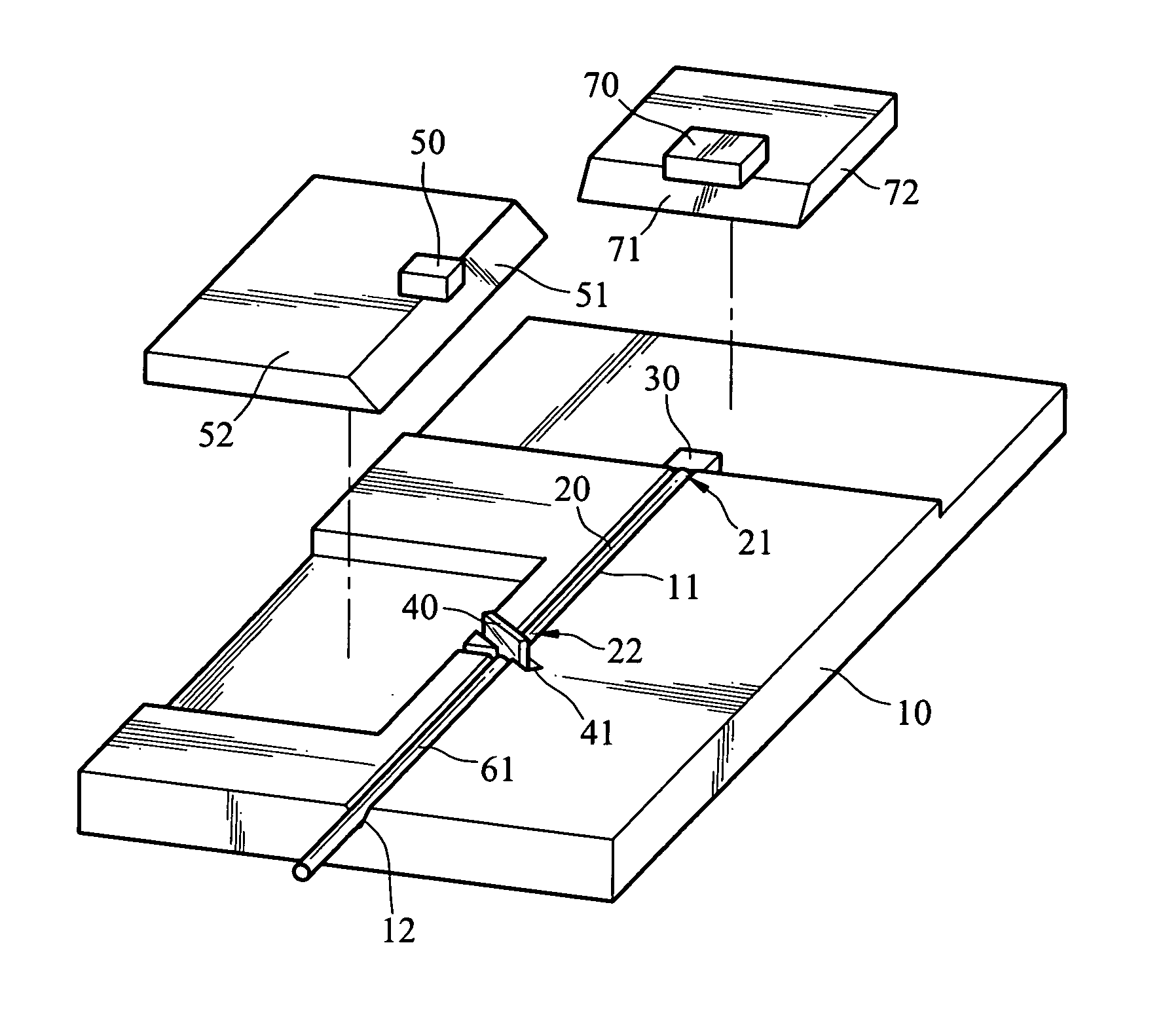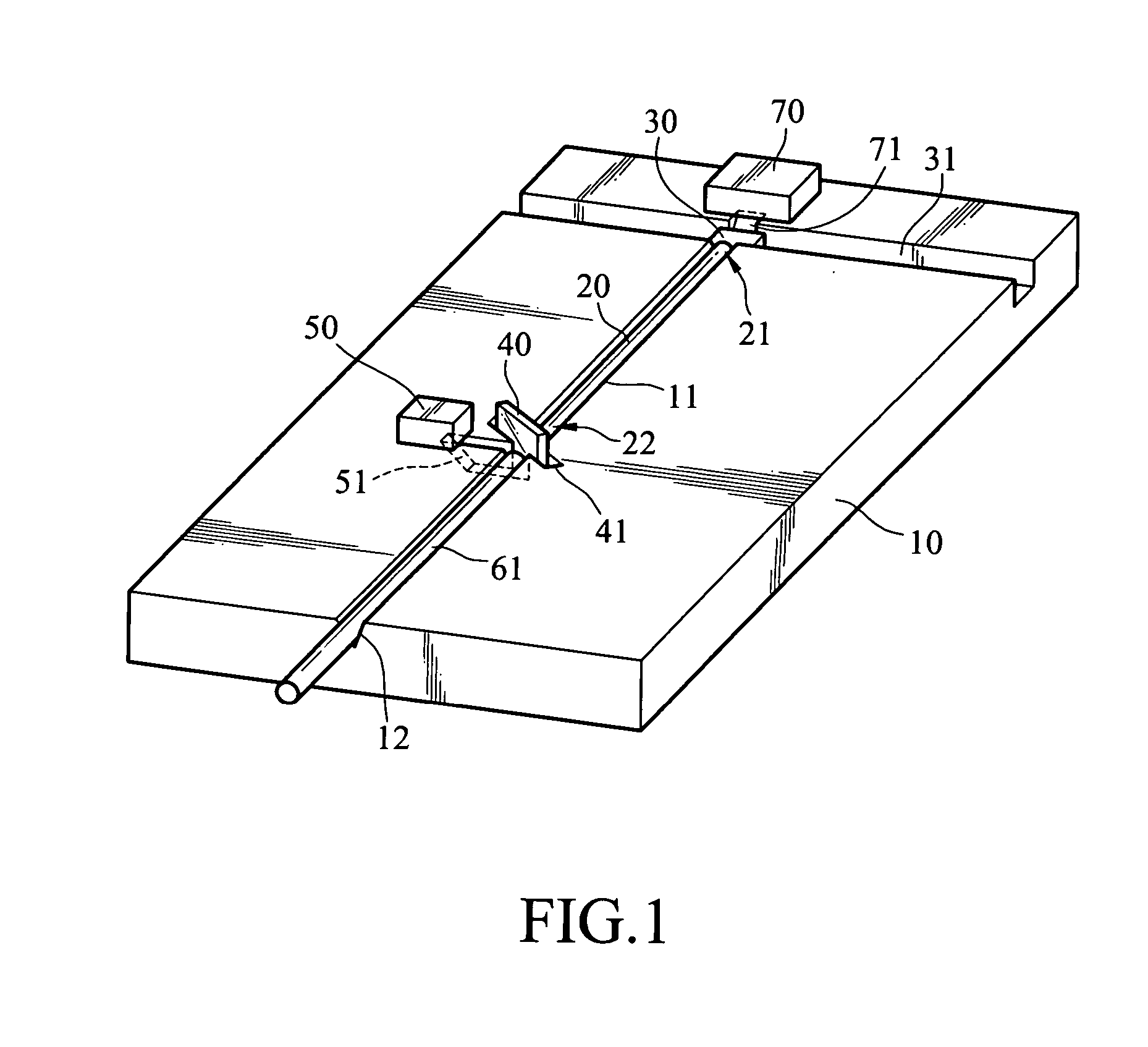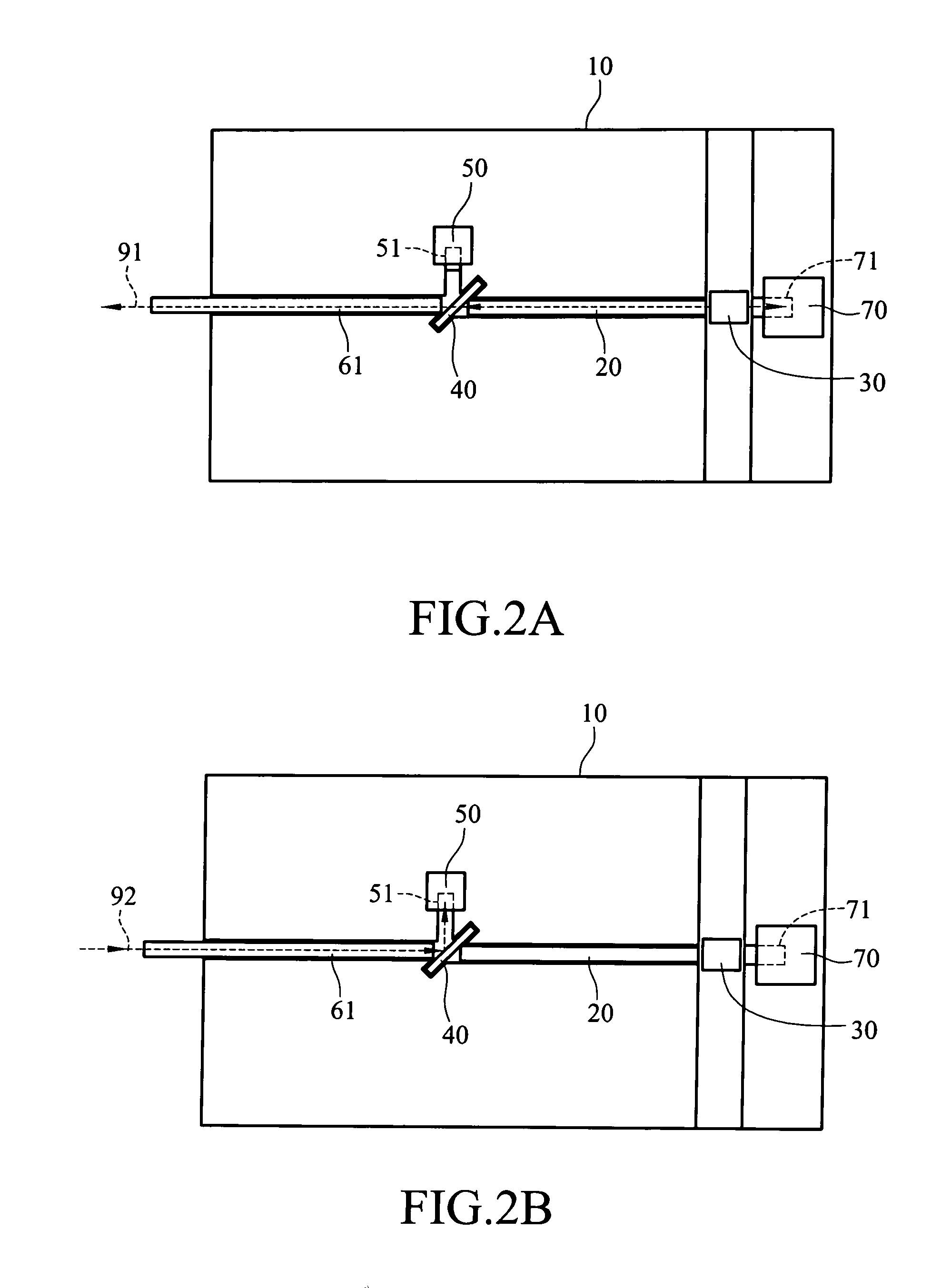Fiber waveguide optical subassembly module
a fiber waveguide and optical sub-assembly technology, applied in the field of optical sub-assembly, can solve the problems of power output and transmission quality being turned down, misalignment and poor coupling, and the laser diode alignment is difficult to achieve, and achieves the effect of reducing dispersion, increasing alignment tolerance, and reducing cos
- Summary
- Abstract
- Description
- Claims
- Application Information
AI Technical Summary
Benefits of technology
Problems solved by technology
Method used
Image
Examples
second embodiment
[0024] To prevent from difficulties of fabricating the reflective surfaces 51, 71 on the optical bench 10, a second embodiment is provided as shown in FIG. 3A and FIG. 3B. A monitor carrier 72 formed with a reflective surface 71 carries the monitor 70. The same, a detector carrier 52 formed with a reflective surface 51 carries the light detector 50. Therefore, the optical bench 10 is not needed for being machined with the reflective surfaces 51, 71; but only to be mounted with the monitor carrier 72 and the detector carrier 52.
first embodiment
[0025] On the other hand, the invention may further comprise a third optical transmission element. The third optical transmission element is a multi-mode optical fiber described below, of course the third optical transmission element may is a planar waveguide. triplexer optical subassembly of the invention is shown in FIG. 4. It has a similar construction to the duplexer optical subassembly described above, but further having a second multi-mode optical fiber 62 located in a fiber groove 13; and a third splitter 42 located in a third splitter groove 43. The second multi-mode optical fiber 62 has a front end 621 coupled with the splitter 40; and a rear end 622 coupled with the third splitter 42. In the drawing, besides the fiber groove 13 and the third splitter groove 43, other optical components, such as the emitter groove 31, the splitter groove 41, the light detector 50, a third light detector 80 and monitor 70, are applied in the same way.
[0026] As shown in FIG. 5A, the output li...
PUM
 Login to View More
Login to View More Abstract
Description
Claims
Application Information
 Login to View More
Login to View More - R&D
- Intellectual Property
- Life Sciences
- Materials
- Tech Scout
- Unparalleled Data Quality
- Higher Quality Content
- 60% Fewer Hallucinations
Browse by: Latest US Patents, China's latest patents, Technical Efficacy Thesaurus, Application Domain, Technology Topic, Popular Technical Reports.
© 2025 PatSnap. All rights reserved.Legal|Privacy policy|Modern Slavery Act Transparency Statement|Sitemap|About US| Contact US: help@patsnap.com



